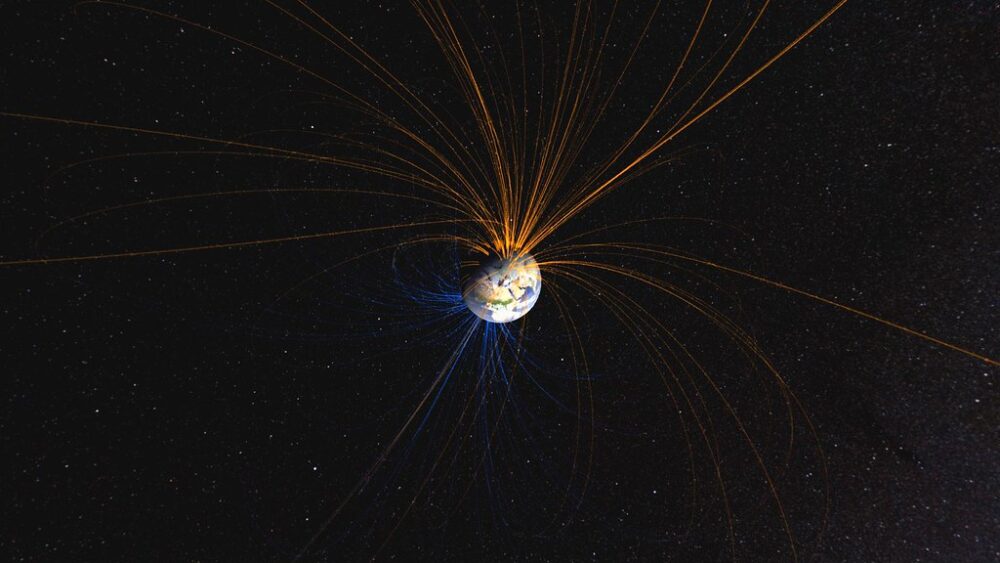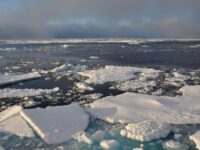Beneath the African continent and the Pacific Ocean; two mantle superplumes, massive areas of the mantle with different seismic wave velocities and different compositions; exist. These large areas are associated with most hot spot volcanoes and large provinces of volcanic rock on the Earth’s surface. Their formation is linked to the supercontinent cycle, the cyclical formation and break-up of supercontinents, and true polar wander, the large-scale shifting of Earth’s entire crust and mantle as one whole structure relative to the Earth’s core and spin axis. These superplumes and the associated reorientation of Earth’s axis are evidence of the past supercontinent cycle and the delicate dance of tectonic plates over our planet’s surface, slowly enacted over the last 4.5 billion years.
The science behind how superplumes are created is largely debated. In general, some theorize once formed, a supercontinent shields the mantle below it from heat loss and cold subducting slabs, causing heat to build up into a superplume. Others believe the many tectonic plates subducting beneath the edges of a supercontinent cause mass to accumulate beneath it and form these plumes. Regardless, over the first 20 million to 120 million years of the supercontinent’s existence, these large plumes build up deep in the mantle, eventually accumulating petatons of rock, dramatically changing the worldwide distribution of mass and energy. Today, the two extant superplumes represent 6% of the total volume of the Earth alone.
Over the first 20 million to 120 million years of the supercontinent’s existence, these large plumes build up deep in the mantle, eventually accumulating petatons of rock, dramatically changing the worldwide distribution of mass and energy.
Like any other rotating body, Earth is subject to the laws of physics. These laws dictate that the Earth should spin around an axis where it is most stable. If it is spinning around some other axis, the Earth will slowly rotate the axis it’s spinning around until it is in its most stable configuration. This axis of maximum stability is also known as the axis with the greatest moment of inertia. Unlike most rotating objects you’ll see in physics class, however, Earth’s greatest moment of inertia is always changing as powerful geologic processes reshape its surface and interior. This changing moment of inertia leads to true polar wander as our crust and mantle rotate around the core to try and reach that maximally stable spin axis.
Though true polar wander can be caused by any shift in mass balance, for the scale of it to be observable, there needs to be an awe-inspiring shift in the planet’s mass distribution. The displacement of gigatons of water to the poles during the last ice age caused less than 1 degree of true polar wander, but the formation of these superplumes is more than enough. So, over tens of millions of years, Earth’s mantle and crust rotate around the liquid inner core, until the whole supercontinent is centered on the equator, sometimes representing shifts on the order of tens of degrees.
Over tens of millions of years, Earth’s mantle and crust rotate around the liquid inner core, until the whole supercontinent is centered on the equator, sometimes representing shifts on the order of tens of degrees.
As this whole-Earth rotation is happening, the mantle plume beneath a supercontinent grows in strength, driving the rotation faster and laying the seeds of the destruction of the very supercontinent that allowed it to form. These superplumes drive mantle upwelling, pushing large amounts of magma to the surface and leading to volcanism and the formation of divergent boundaries. These divergent boundaries eventually form into continental rifts and oceans form between the constituent parts of the former supercontinent. The continents drift apart and the superplume beneath them continues to cool until another supercontinent is formed, and the cycle happens once again.
This cycle has happened at least three times in Earth’s history. The most recent being the supercontinent Pangea, which formed 320 million years ago and broke up 170 million years ago. Before that, came the supercontinent Rodinia, which lasted from 900 million to 700 million years ago, and the even older supercontinent Columbia, which broke up about 1.3 billion years ago. There are even older supercontinents theorized, but the lack of geologic evidence from that long ago means details about them are scarce. The next supercontinent, Amasia is theorized to form in 200 to 300 million years as the Pacific Ocean slowly closes, uniting America and Eurasia.
Image courtesy of Flickr

